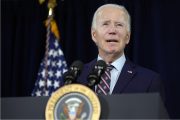As tensions between the United States and Iran continue to escalate — especially after attacks of unknown origin struck two different oil tankers on June 13 in the Strait of Hormuz — the United States is sending 1,000 additional troops to the Middle East.
The Japanese-owned Kokuka Courageous and the Norwegian-owned Front Altair were damaged by mines that U.S. officials said were placed on the ship’s hulls by Iran’s Islamic Revolutionary Guard Corps (IRGC).
“In response to a request from the U.S. Central Command (CENTCOM) for additional forces, and with the advice of the Chairman of the Joint Chiefs of Staff and in consultation with the White House, I have authorized approximately 1,000 additional troops for defensive purposes to address air, naval, and ground-based threats in the Middle East,” acting Defense Secretary Patrick Shanahan said in a statement on June 17.
Although the United States has blamed Tehran for the attacks, The New American reported on June 15 that Yutaka Katada owner of the Kokuka Courageous, said that his oil tanker could not have been struck by either mines or torpedoes, since the only damage was above the waterline (though small mines can be carried by personnel and be placed above the waterline). The owners of the Front Altair offered no public statement as to the cause of the damage to its vessel.
U.S. Secretary of State Mike Pompeo accused Iran of a “blatant” attack on the two tankers and National Security Advisor John Bolton agreed, saying that Iran was “almost certainly ” responsible for the attacks. Bolton asked, “Who else would you think is doing it?”
Pompeo said that his assertion that it was the Iranians was based on “intelligence.”
But as The New American’s Steve Byas noted in his report:
Of course, President Trump, of all people, should be somewhat skeptical of the U.S. “intelligence” community. After all, the U.S. intelligence community universally supported President George Bush’s claims that Iraq had massive amounts of weapons of mass destruction (WMDs). Saddam Hussein, then Iraq’s strong man, refused to give up his WMDs, even under threat of invasion by the U.S., and eventually this led to the Iraq War of 2003.
Of course, after Saddam Hussein was removed from power, the WMDs used to justify the invasion against him were never found.
Reuters reported on June 18 that following Shanahan’s announcement the previous day that Washington planned to send 1,000 more troops to the Middle East, Russia’s Deputy Foreign Minister Sergei Ryabkov told Russian news agencies: “Now what we see are unending and sustained U.S. attempts to crank up political, psychological, economic and yes military pressure on Iran in quite a provocative way. [These actions] cannot be assessed as anything but a conscious course to provoke war,” Ryabkov was cited as saying.
In a May 15 article, we cited a New York Times report stating that a U.S. military build-up in the Middle East was being ordered by administration “hard-liners” led by CFR member John R. Bolton, President Trump’s national security advisor, who has long pushed for regime change in Iran.
Image: Goarmy.com
Related articles:
Japanese Owner of Tanker Contradicts Claims That Mines or Torpedoes Damaged His Ship
Amid Threat of Physical War, Iran and Trump Engage in War of Words
Administration Hawks Led by John Bolton Create Anti-Iran Military Plan
Iranian Military Leader Says U.S. Deployment of Carrier Group Makes It “a Target”
President Trump Beats War Drums for Iran
Are All the World’s Problems Ours?
Mike Pompeo vs. Rand Paul on the President’s Presumed War Powers
Warren Mass has served The New American since its launch in 1985 in several capacities, including marketing, editing, and writing. Since retiring from the staff several years ago, he has been a regular contributor to the magazine. Warren writes from Texas and can be reached at [email protected].



